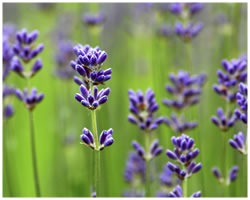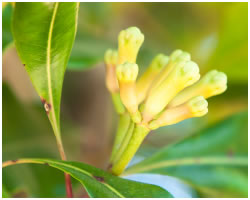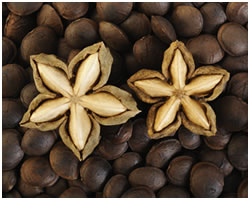MARKET REPORT JUNE 2017
The following report contains updates on the current trends in production and availability of the most in-demand Essential Oils and Raw Materials sourced from around the globe.

The Rose harvest season is between May and June. The Rose Concrete is ready in June, and the Absolute is extracted at a later stage. The favorable growing conditions are producing a steady volume of the Rose crop. Typically, in Bulgaria, the main Rose crop volumes are processed into Rose Otto and Rose Water, and lower Rose crop volumes are processed into Concretes and Absolutes. The harvest yield is approximately 300-400 kg per year; however, there is no production of Absolutes from the 2017 crop yet. Demand is stable, which will translate into approximately 80-100 kg per year.

The season of harvest for Bulgarian Lavender is from the end of June to the end of July. Due to the dry period last autumn and the long, cold winter of 2017, the crop is expected to be problematic. Many fields, especially the organic fields and those that are 5-5 years old, are in bad conditions. The 2017 harvest yield is projected to be 30% less than that of 2016. In other words, the crop is expected to be below 200 tons compared to the 2016 yield of 280+ tons. There is a continuous high demand for an estimated 80 tons, though the maximum sale reached last season was 50 tons. The market conditions are strong, but stock has been unavailable since March.

In Sri Lanka, the season of harvest for Cinnamon is between May and November. The second harvest season, which is from the end of December to the first week of March, has always made a remarkable contribution to the total crop yield. Cinnamon typically grows throughout the island of Sri Lanka, though it grows mainly in the South. To enhance total DGP output, the arranged plantation concept is vital. Cinnamon processing has reached a critical stage where it is in need of processors (people who process cinnamon sticks from the cinnamomum zealynicum tree), and the lack thereof forecasts an unsound situation in the future. To address this issue, the government has taken the initiative of promoting true Cinnamon under the Ceylon brand in order to sustain the industry and the estate owners. Industry challenges remain due to weather patterns, other alternatives in the market, as well as the aforementioned shortage of processors.
In the past two years, the demand for and the trust in Cinnamon has increased significantly due to its higher beneficial value when compared to its main rival, Cassia, which contains a higher level of Coumarin – a flavoring substance that can cause liver damage. Optimal Cinnamon prices are expected from overseas partners, as Cinnamon prices are expected to be on the higher end compared to the prices offered by nations providing Cassia. Due to inflation rates in Sri Lanka, a higher price may be expected in the future. In coming years, Cinnamon production will increase in accordance with the demand from the export market.

In the plains of India, the flowering season for cloves is between September and October, while in higher altitudes it is between December and February. The Clove market is predicted to remain steady and the supply from all origins matches the demand. Though it is below the annual demand, Indian Clove crop is estimated to be good this year. The total output during the current season is estimated to be between 1,500 and 2,000 tonnes. In Idukki and Kollam, two of Kerala's growing districts, production is projected to be better than last year.
Despite having the same tree origin, Clove Bud and Clove Leaf oils are different products. Clove Bud oil is distilled from the dust of a ground Clove bud. The Clove Leaf Oil crop is typically available between May and October; however, July's expected weather change in terms of excessive rainfall will impact production, as this will limit the ability to sun dry the leaves during a rainy season. Generally, a big Clove Bud crop has led to relatively small Clove Leaf Oil production, which can have a negative impact on farmers, as Clove Leaf Oil production is their main revenue. As well as being used in perfumery, Clove Leaf Oil is also widely used in the flavouring industry, making it more often consumed than Clove Bud Oil. The demand for Clove Leaf Oil promotes approximately 3000 to 4000 tons per year in supply, but 2017 production is less than that of 2016 due to weather conditions.

Anise Star is harvested year-round and does not require specific growing conditions; however, excessive rain will cause a decrease in the crop. Compared to last year's crop, the harvest yield is projected to be lower this year. The demand is increasing, but market conditions are unclear. In China, the harvest season is between August and October. The current growing conditions are favourable, especially in the South of China. The projected harvest yield has not changed much since last year, but the costs of raw materials and labor are higher than the previous year. Prices have slightly risen but remain relatively stable. Anise Star Essential Oil output is between 5 and 10 MT per year; however, due to a shortage of raw material, Anise Star EO is currently unavailable. It continues to be available at New Directions Aromatics.

Olives are harvested from late November to April, though production has decreased due to the ongoing drought in Spain that began in 2015/2016. The total production from the 2016-2017 harvest was similar to that of 2016. There was a rise in prices due to low production, especially because the Xylella fastidiosa outbreak in Italy, which is causing a large quantity of plants to be destroyed. This has led to them buying a big part of the Spanish production. If the weather conditions remain the same as they are currently, next year's production will be like this year's, which is smaller than usual. Demand is expected to be high due to the problem of plant pathogens in other producing countries. Market conditions are presently stable with a rise predicted to occur at the end of summer.

Camellia Seed is harvested from October to January. The environmental and growing conditions are favorable, as the Camellia trees grow in the sun with minimal pollution at a great distance from chemical fertilizers and pesticides. The projected harvest yield for organic Camellia is a steady 600 MT per year. Demand is continuing to increase and the market conditions have both opportunities and challenges.




